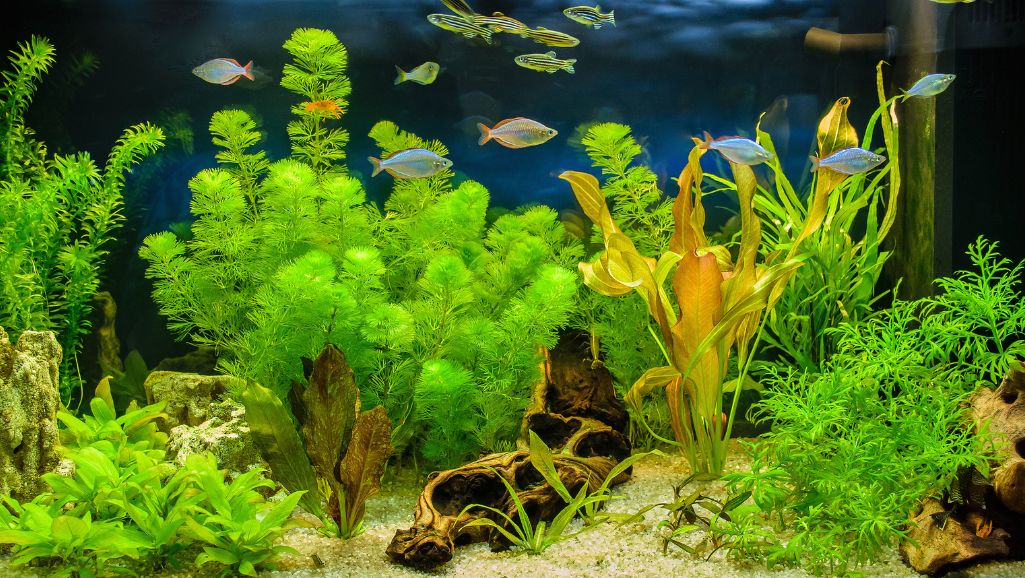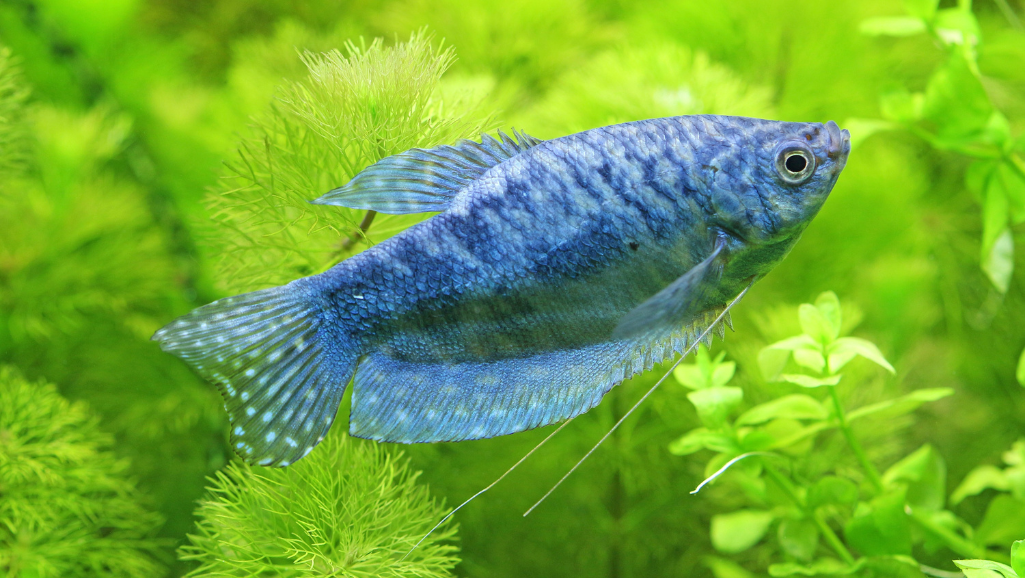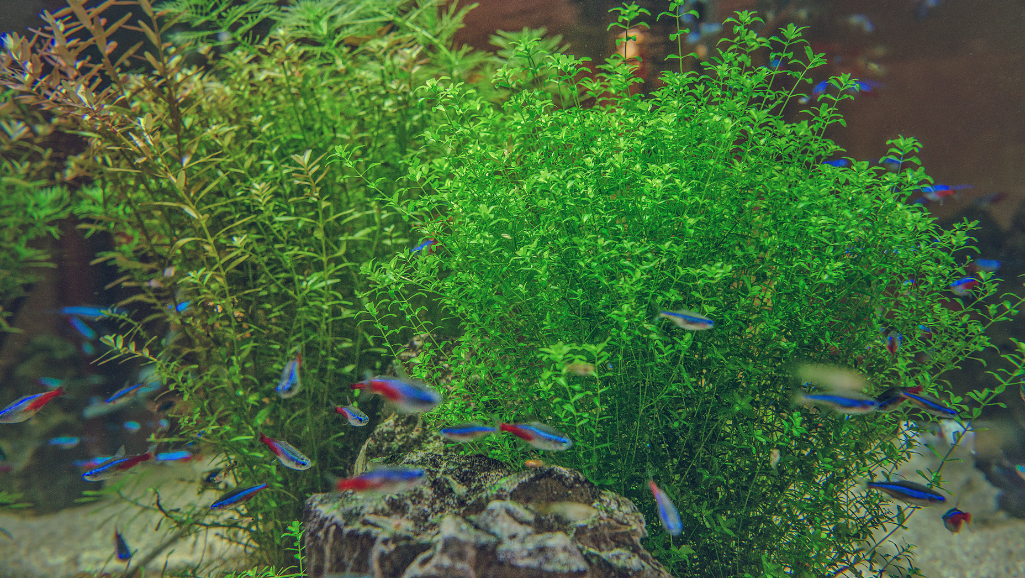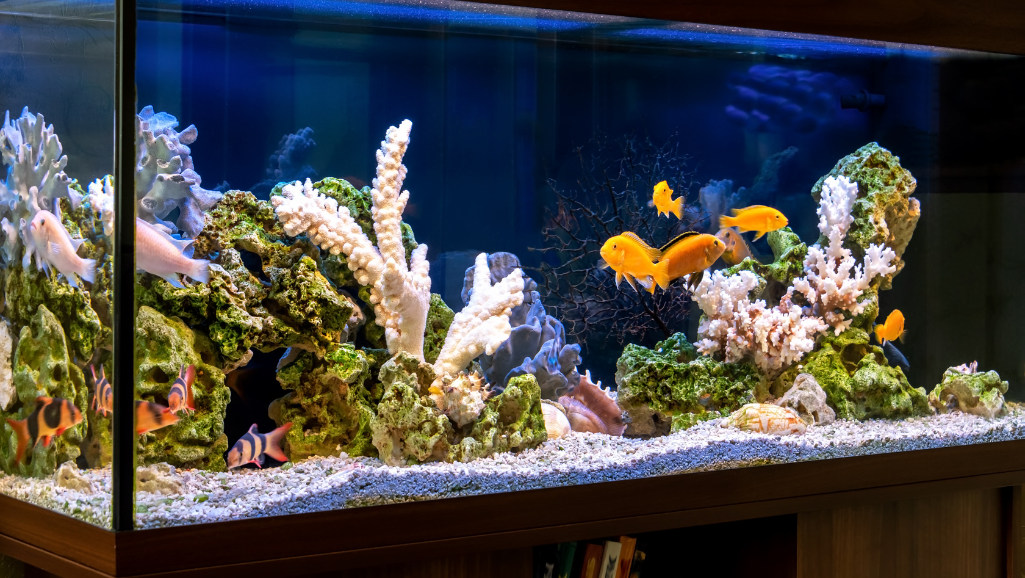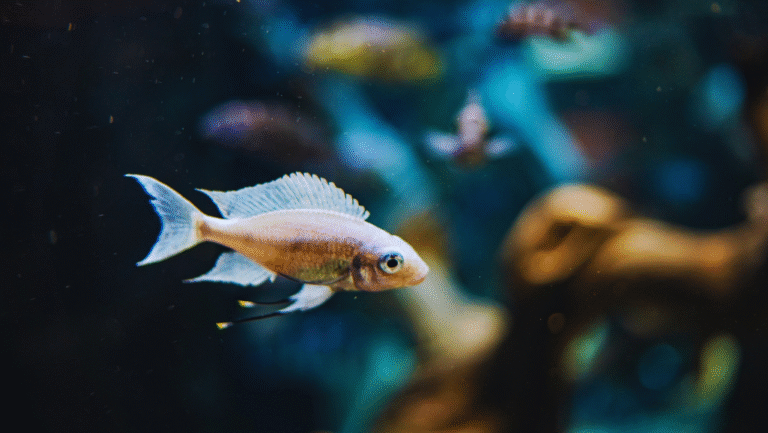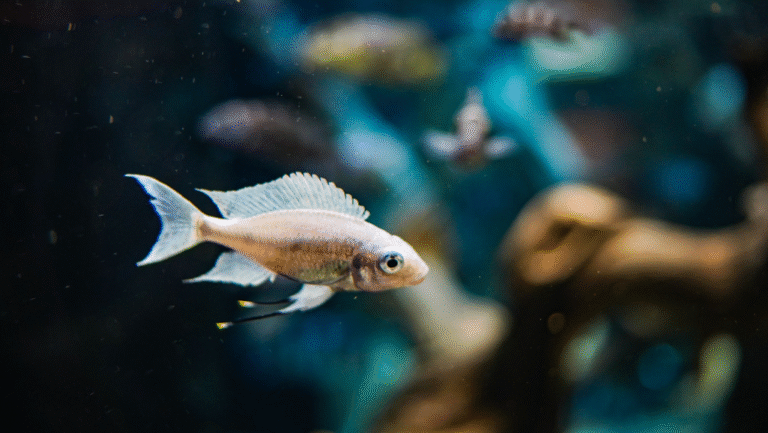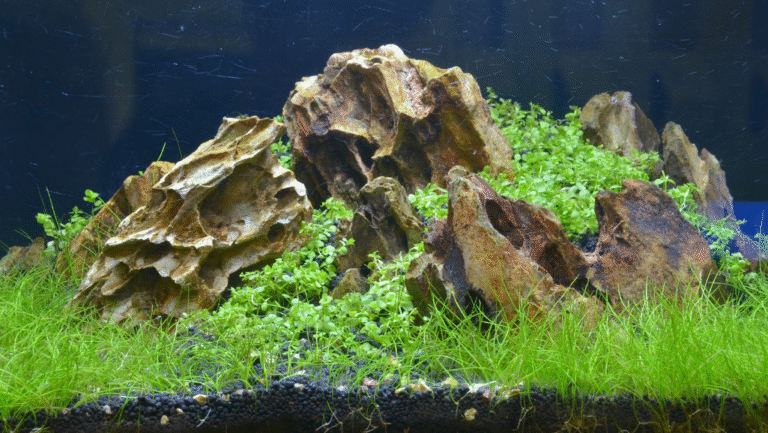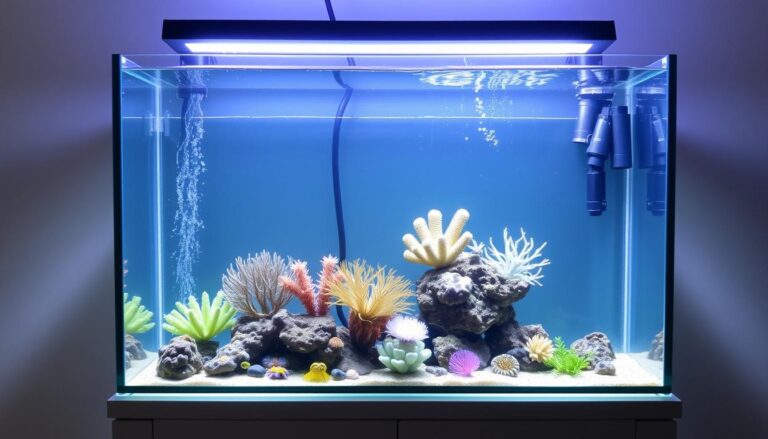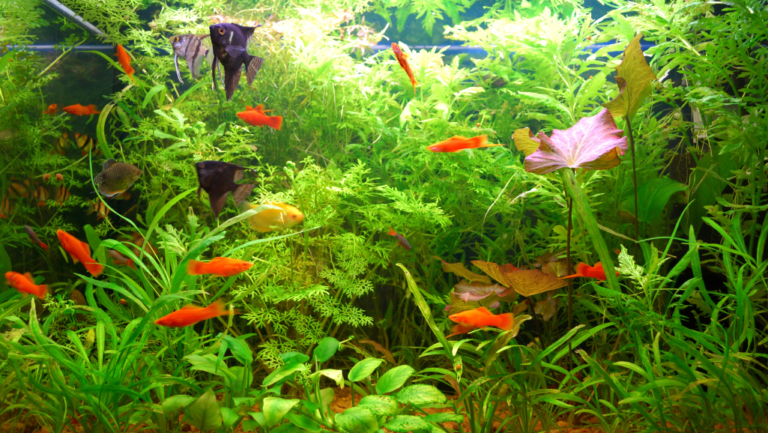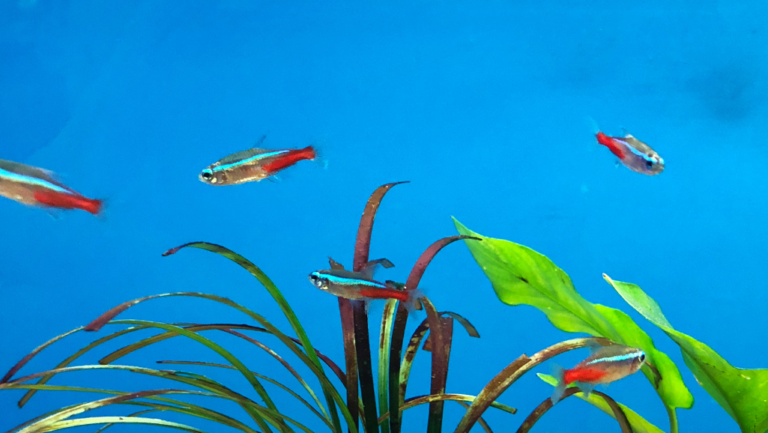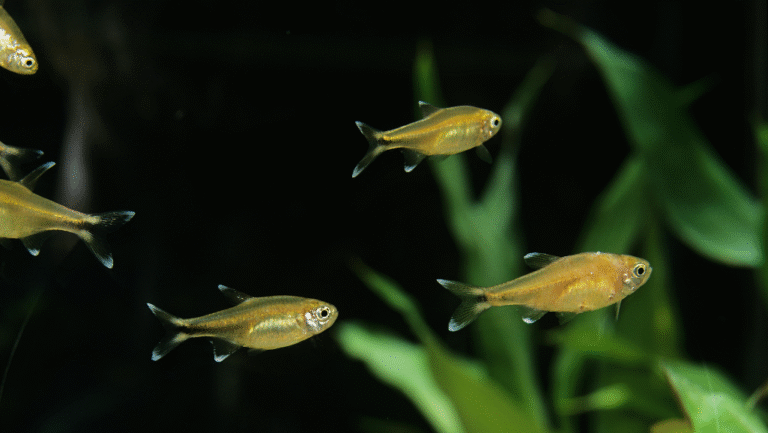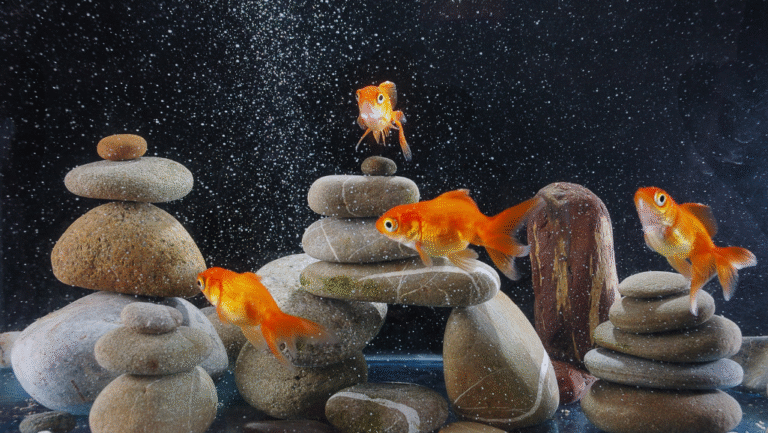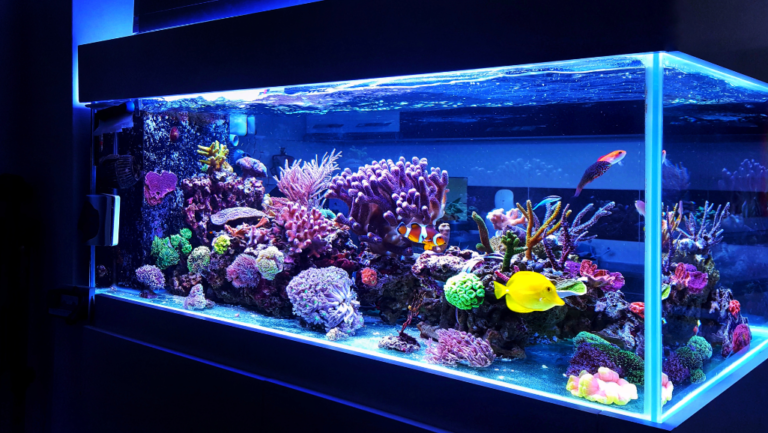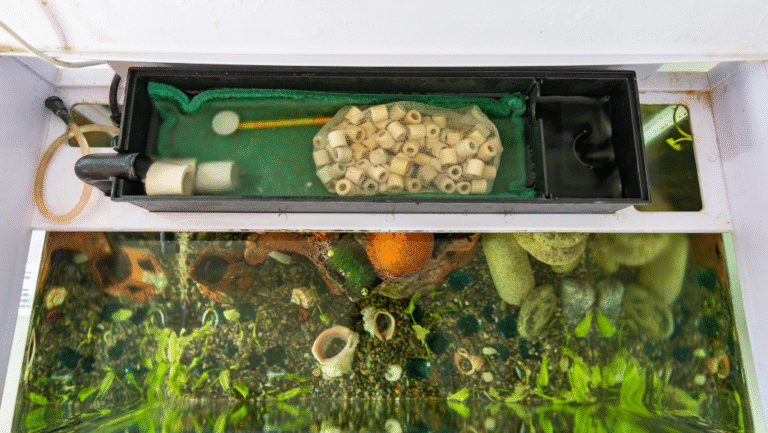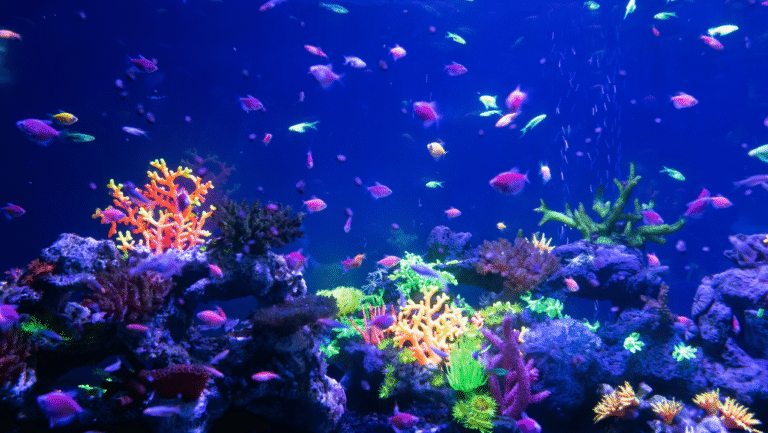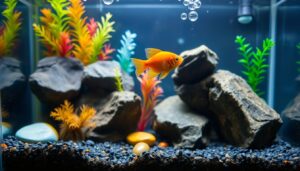The beauty of a thriving tank ecosystem comes from the magical world of aquatic plants. Low light aquarium plants are perfect for creating serene aquascapes for beginners. These plants grow well in dim light, adding beauty and helping your fish.
From the lush Anubias Nana to the tall Amazon Sword, these plants are key to a lively underwater scene. They don’t need strong, energy-wasting lights to thrive.
Adding low light aquarium plants makes your aquascape look better and helps your fish. They help keep the water clean and full of oxygen. This is vital for a thriving tank ecosystem.
Also, beginner-friendly aquatic plants make it easy for new hobbyists to enjoy a lush, peaceful underwater world. This world is free from the hassle of high-tech setups.
Key Takeaways
- Sculpt a peaceful aquascape with low light aquarium plants that require minimal lighting.
- Experience the joy of a thriving tank ecosystem with plants that serve as natural purifiers.
- Opt for beginner-friendly aquatic plants that offer easy maintenance and care.
- Create a serene aquascape that is as beneficial as it is beautiful.
- Transform your aquarium into a captivating underwater world without expensive lighting.
- Foster a healthy environment for your fish with the added oxygenation from live plants.
The Alluring Benefits of Low Light Aquarium Plants
Low light aquarium plants can turn an ordinary tank into a vibrant ecosystem. They look great and help keep the water clean. This makes your tank a healthy home for fish.
Enhancing Water Quality Naturally
Low maintenance aquarium plants are great at cleaning the water. They soak up bad stuff like nitrates and ammonia. This keeps the water safe for fish.
For more on keeping fish healthy, check out a guide on selecting fish for small tanks.
Reduced Maintenance for Busy Aquarists
If you’re busy, low maintenance aquarium plants are perfect. They grow slowly and need little care. This means you can enjoy your tank without a lot of work.
Oxygen Production for Thriving Fish
These plants also help make more oxygen in the tank. This is good for fish and makes the tank a better place to live. Using both floating and submerged plants helps even more.
Combating Algae with Shade-Tolerant Flora
Algae can be a problem, but these plants fight it off. They use up nutrients that algae needs. This keeps the water clear and the tank looking good.
In short, plants like Anubias and Amazon Sword make your tank look better and keep it healthy. They clean the water, need little care, and add oxygen. This creates a great home for your fish. For more on choosing fish, look at guides for small tanks.
Essential Considerations for Selecting Low Light Aquarium Plants
Starting a peaceful underwater world needs careful planning. Key factors are important for the health of beginner-friendly aquatic plants. These factors help keep your aquarium balanced and healthy.
Aligning Plant Choices with Tank Size and Layout
Choosing the right tank size is key for low light plants. Tall plants like the grand Amazon Sword need big tanks. Smaller tanks are perfect for Marimo Moss Balls and Java Moss.
Think about the plant’s size and your tank’s layout. This ensures both beauty and health.
Substrate Type: Foundation for Plant Health
The substrate type is crucial for plant health. Nutrient-rich substrates like aquasoil are great for plants like Cryptocoryne. They need nutrients for growth.
For easy care, sand or gravel works well. They’re good for hardy plants like Anubias Nana.
Ensuring Compatibility with Resident Fish Species
Plants and fish must get along in your tank. Plants like Java Fern and Dwarf Sagittaria are friendly with many fish. This includes bettas, which like plants for hiding.
Choose plants that match your fish. This keeps your tank peaceful and healthy. Learn more about fish and plant compatibility.
When picking plants, think about substrate, tank size, and fish friends. Your aquarium will become a stunning, easy-care space. For more tips, check out our guide on low light aquarium plants.
Top Choices Among Low Light Aquarium Plants
Looking to brighten up your aquarium with plants that love the dark? Knowing the best low light aquarium plants can make a big difference. These plants are not only pretty but also help keep the water clean and reduce the need for upkeep.
Anubias Nana is a favorite for its lush green leaves and low light needs. The Java Fern is another top pick for its toughness and ability to grow well in different water conditions. These plants can be attached to driftwood or rocks, adding a natural beauty to your tank.
If you love the look of underwater meadows, Cryptocoryne Wendtii is a great choice. It comes in various colors and grows well in low light. The Vallisneria Spiralis grows fast and looks like tall grass. The Marimo Moss Ball is a fun addition, rolling around and filtering the water.
- Bacopa Caroliniana: Thrives in low light, providing a splash of color with minimal upkeep.
- Water Wisteria: Known for its rapid growth and ability to adapt to different lighting, perfect for background placement.
- Hornwort: An excellent option for those needing a fast-growing species that offers ample coverage.
- Dwarf Sagittaria: Creates a dense carpet look, ideal for the foreground of your tank.
Picking the right low light aquarium plant species depends on your tank’s conditions and what you like. Whether you prefer the tall Vallisneria or the ground-hugging Anubias, these easy care aquatic plants make it easy to create a lively tank. Remember to think about how big your plants will get to avoid overcrowding.
Choosing the right plants for your tank is more than just picking what looks good. It’s about making a healthy, thriving environment. With these low light plants, even beginners can create a stunning underwater world. Start your low light aquarium journey with confidence, knowing these plants will bring beauty and benefits to your hobby.
Caring for Your Low Light Aquarium Plants
Keeping low light tank plants healthy and vibrant requires a few key steps. Whether you’re new or experienced, knowing how to care for aquatic plants can make your aquarium better.
Lighting Specifications for Optimal Plant Health
Plants like Java Fern and Anubias Nana do well with moderate light. They need about 6-8 hours of light each day. This amount helps them grow without too much algae.
It’s important to adjust the light to avoid direct intensity. This balance supports both plant health and looks good.
The Role of Fertilization in Plant Growth
Even though low light plants are less demanding, using liquid fertilizers can help them grow better. They need regular but not too much fertilization. This is key for plants like Amazon Sword and Cryptocoryne.
Especially important for these plants is the aquarium substrate. It provides the nutrients they need.
Substrate and Supplementation: Tips for Flourishing Plants
Choosing the right aquarium substrate is key for rooted plants. Nutrient-rich substrates help plants like Cryptocoryne grow strong.
For plants like Anubias and Java Fern, attaching them to driftwood or rocks helps. It makes them look like they’re in their natural home. While CO2 systems aren’t needed for most low light plants, they can help them grow more and reduce algae.
Success in caring for low light tank plants comes from knowing their needs. With the right light, nutrients, and substrate, they can turn any aquarium into a beautiful underwater world.
Creating a Breathtaking Aquascape with Low Light Aquarium Plants
The art of aquascape planning is more than just picking plants. It’s about designing an underwater world that amazes and calms. When you use low light aquarium design, choosing and placing plants wisely is key. This creates a peaceful yet beautiful space.
Knowing how to arrange plants adds depth and perspective. Use tall plants like Vallisneria in the back and short ones like Java Moss up front. This adds structure and beauty to your tank.
Strategic Plant Placement for Aesthetic Appeal
Think about how plants grow and look when placing them. Put tall plants like Hornwort in the back for a lush look. Use short, colorful plants like Bacopa Caroliniana up front for interesting details. This makes your aquascape balanced and beautiful.
Mixing Plant Varieties for Texture and Color Diversity
Variety is important in aquascaping. Mix plants with different textures and colors like Dwarf Sagittaria and Water Wisteria. This makes your tank look vibrant and alive.
Choosing the right plants for low light is part of low light aquarium design and aquascape planning. Plants like Water Wisteria and Vallisneria grow well in low light. They add life to your tank and are easy to care for.
The goal is to make a living artwork that is beautiful and peaceful. Think carefully about how you arrange plants. This ensures they grow well and look good together, making a stunning aquascape.
Avoiding Common Pitfalls with Low Light Aquarium Plant Care
Keeping low maintenance aquarium plants can make your aquarium care easier. But, you might face issues like nutrient supplements and algae control. Knowing how to manage these can help your plants thrive without too much work.
Identifying and Correcting Nutrient Deficiencies
Nutrient deficiencies can show up as yellow leaves or slow growth. Adding nutrient supplements can help a lot. Use root tabs or liquid fertilizers to give your plants what they need.
Start with a small amount of nutrients and watch how your plants do. If needed, adjust the amount to avoid too much, which can cause algae.
Preventing and Controlling Algae in Planted Tanks
Algae problems often come from too much light or nutrients. To control algae, make sure your lighting is right. Low maintenance aquarium plants need 6-8 hours of light a day, but don’t go over 12 hours.
Adding algae-eating fish or removing algae can also help. Using a light like the Easy Plant LED can save energy and help your plants and fish.
For healthy low maintenance aquarium plants, balance light, nutrients, and care is key. Follow these tips to avoid common problems and enjoy a beautiful underwater garden with little effort.
Conclusion
Adding aquatic plants to an aquarium is more than just making it look good. It’s a way to create a lush underwater scenery that helps keep the water healthy. This article showed how plants that don’t need much light are great for beginners or for tanks that don’t get a lot of sunlight.
Plants like Java Fern and Anubias Nana can make your tank look beautiful and balanced. They also help keep the water clean by absorbing extra nutrients and providing oxygen. This makes the tank a better place for fish and other underwater creatures.
For those who want a colorful and easy-to-care-for tank, exploring low light plants is key. To find the perfect plants for your tank, check out guides like this one that lists low light aquarium plants.
But taking care of plants is just the start. You also need to do regular water changes and check the water’s quality. With the right care and a bit of creativity, you can turn your tank into a peaceful, living work of art. As we tend to these underwater gardens, we see how light, life, and growth all work together.
